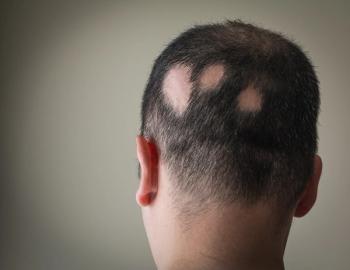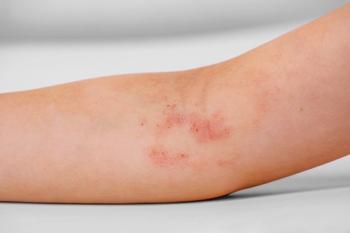
Flat Warts and Syringomas
This girl was brought for evaluation of these "bumps" around her eyes. Her parents are concerned that the lesions will interfere with her vision.
Figure
Figure
Figure
Figure>
Case 1:
This boy is concerned about the appearance of these tiny lesions. What are they-and how would you treat them?
Case 2:
This girl was brought for evaluation of these "bumps" around her eyes. Her parents are concerned that the lesions will interfere with her vision.
What disorders would you consider in your differential?
Dermclinic-Answers
Case 1: Flat Warts
These are flat warts caused by infection with human papilloma virus (HPV)-in particular HPV types 3, 10, and 28. Synonyms include verrucae plana and plane warts. Flat warts are more common in adults than in children.
Flat warts can be white, pink-brown, or skin-colored. The number of lesions ranges from several to hundreds. The papules may be partially grouped, not grouped, generalized, or linear. They are caused by a variation of the Koebner phenomenon, in which spread occurs in areas of trauma via autoinoculation. The surface of flat warts can be smooth, slightly hyperkeratotic, or rough, and their tops are usually flat.
In some persons, flat warts resolve spontaneously. Treatment with topical imiquimod or cryotherapy is usually successful. Cantharidin, trichloroacetic acid, and podophyllin can also be used.
In rare cases, flat warts are a sign of the genetic syndrome epidermodysplasia verruciformis, in which infection with HPV types 5 and 8 is often the cause.1
Case 2: Syringomas
Syringomas are histologically benign eccrine duct tumors that usually occur on and around the eyelids. They can also arise at other sites, including the face, axilla, umbilicus, upper chest, penis, and vulva. Syringomas generally first appear at puberty.
Syringomas are skin-colored or yellowish, small dermal papules that can have a translucent or cystic quality with rounded or flat tops. The lesions are usually 1 to 3 mm in diameter. Eruptive syringomas are a variant in adults.
In white persons, syringomas appear as numerous pink papules; in Asians, as yellow papules; and in black persons, as brown papules on the chest or lower abdomen. Most patients with eruptive syringomas are Asian or black.
The differential diagnosis includes milia, acne papules, xanthelasma, trichoepitheliomas, papular sarcoidosis, or basal cell skin cancer. Syringomas are common in patients with Down syndrome. They can also occur in those with Brooke-Spiegler syndrome-an autosomal dominant disorder that results in cylindromas, trichoepitheliomas, and spiradenomas.
Syringomas are often treated for cosmetic reasons by electrosurgery and curettage, ablative lasers (carbon dioxide), or applications of trichloroacetic acid.
References:
- Kao GF. Epidermodysplasia verruciformis. Emedicine. 2007. Available at: http://www.emedicine.com/derm/topic123.htm. Accessed February 15, 2008.
Newsletter
Access practical, evidence-based guidance to support better care for our youngest patients. Join our email list for the latest clinical updates.














